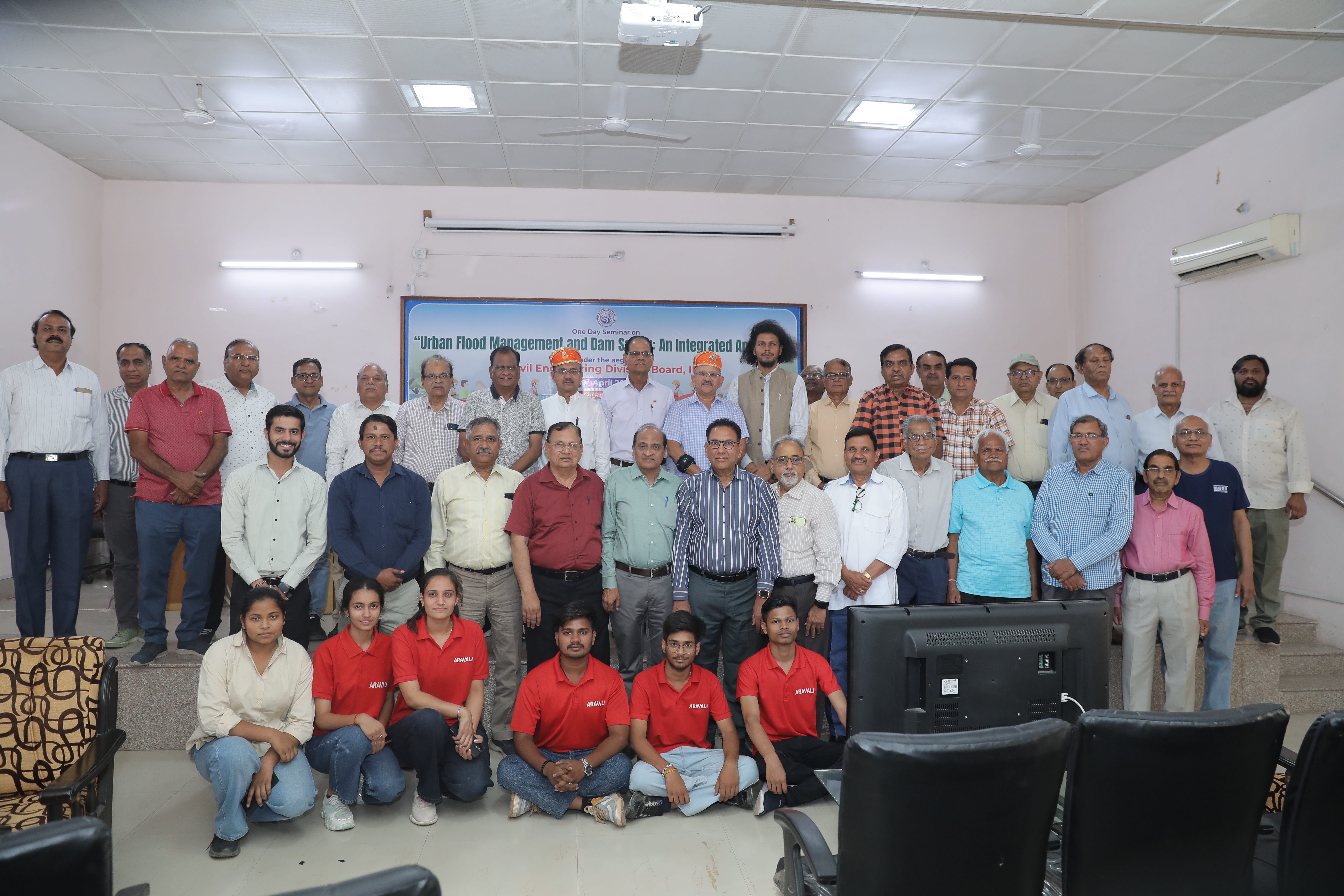
(mohsina bano)
Udaipur : A one-day seminar on “Integrated Approach to Urban Flood Management and Dam Safety” was organized at the auditorium of The Institution of Engineers (India), Udaipur Local Centre. The event was inaugurated with a welcome address by Er. Purushottam Paliwal, Chairman of the Centre, who emphasized that rapid urbanization and climate change have significantly increased the risk of urban flooding, making effective management crucial. He noted that while dams are essential infrastructures for water management, they can pose flood risks if not managed properly. Therefore, a coordinated and risk-based integrated approach is needed that considers urban infrastructure and water resource planning, ultimately protecting lives and property.
Honorary Secretary Er. Piyush Javeria stated that urban flooding is a growing global concern, with rapid urbanization and inadequate infrastructure posing serious challenges to cities worldwide, affecting millions of lives and livelihoods. The seminar was thus aimed at brainstorming viable solutions.
Chief Guest and Keynote Speaker Dr. S.M. Prasanna Kumar, Director, Geetanjali Institute of Technical Studies, highlighted that urban floods are primarily caused by insufficient drainage, encroachments on natural watercourses, climate-induced weather extremes, and poor urban planning. He detailed how intense or prolonged rainfall can overwhelm drainage systems, leading to surface runoff and flooding. Coastal cities are especially vulnerable due to storm surges. Encroachments and impervious surfaces like roads and buildings reduce the land's natural absorption capacity, contributing to increased runoff. He also discussed how land-use changes such as deforestation and loss of wetlands exacerbate flood risks.
Special Guest Er. S.S. Yadav, Council Member from Rajasthan, spoke about the future activities planned by the Institution’s headquarters and encouraged members to increase membership and participate in the upcoming council member elections.
Guest Speaker Er. Mahendra Kumar Chauhan, Chairman, Rajasthan State Centre, Jaipur, emphasized that rainfall patterns have changed drastically over the last 20–30 years with incidents like cloudbursts becoming common. Despite this, engineers can still make a difference through honest efforts. He highlighted that civil engineering, one of the oldest branches, holds the key to tackling urban flood issues. Integrated urban flood management, green infrastructure development, robust land use planning, and comprehensive flood risk assessments are essential to minimize damage and ensure dam safety.
Guest Speaker Er. Rajkumar Singh Chauhan, Former Additional Chief Engineer, PWD, Udaipur, explained how climate change, rapid urbanization, and outdated drainage systems have intensified urban flooding. Using the analogy of a chessboard, he illustrated the need for multi-level planning. He cited global data from 1998–2017, during which over 2 billion people were affected by approximately 80 natural disasters. He also stressed the importance of identifying low-lying areas during the monsoon season and detailed various types of flood situations caused by heavy rain, melting snow, landslides, tsunamis, and dam failures. He defined three key factors to assess flooding: water depth, volume over time, and the extent of submerged areas.
Guest Speaker Er. V.S. Sagar, Additional Chief Engineer, Water Resources Department, Udaipur, discussed storage dams, which are constructed to store surplus water during high-supply periods for later use. These dams are used for irrigation, water supply, and electricity generation and are built using materials like stone, concrete, earth, or rock-fill. He also explained barrier dams, used to temporarily store floodwaters and release them safely afterward. Two types of barrier dams were explained—one with a discharge outlet and one that allows water to percolate, raising groundwater levels and enabling lift irrigation. He shared various flood-related experiences from his service across different districts.
Guest Speaker Er. Rishabh Jain, Superintending Engineer, Quality Control, Water Resources Department, Udaipur, provided insights into the flood preparedness work carried out by his department. This includes inspection of dams, maintenance of gates and sluices, and creation of maps marking sensitive flood-prone areas. He also explained that the Flood Cell is activated from June 5 each year and operates 24x7 during monsoon. Field officials conduct mock drills with local administration and analyze the availability of boats and pumps. Flood mitigation strategies focus on flood control infrastructure, embankments, early warning systems, real-time monitoring, and alert mechanisms. He also shed light on the Dam Safety Act, 2021, which sets guidelines and policies for dam safety regulations and maintenance protocols.
The seminar concluded with a Q&A session and expressions of gratitude to all speakers and participants for their contributions to this critical subject.